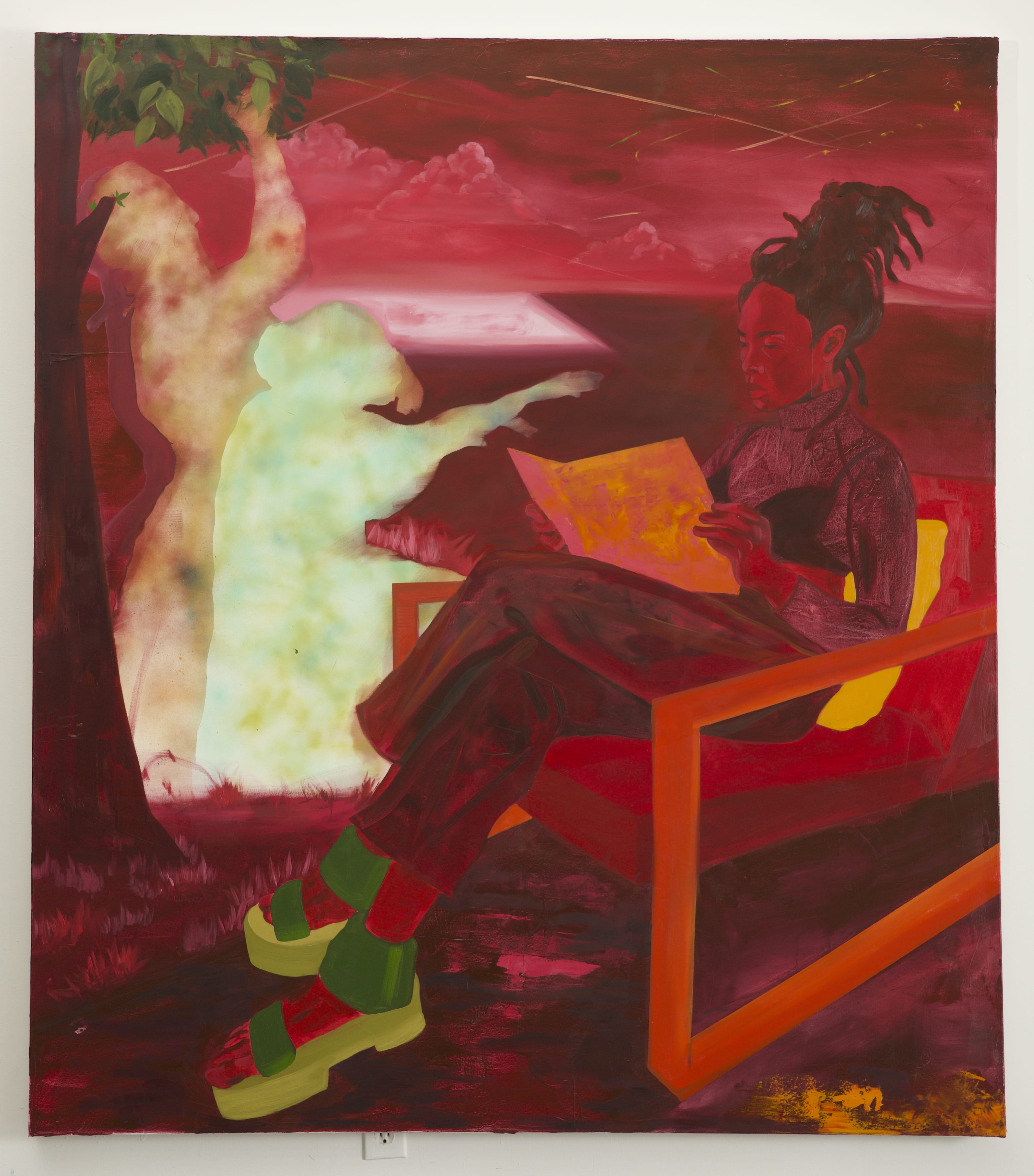Dominic Chambers aims to provide an alternate, intimate perspective of people of color during those quiet times that are often overlooked. Portraying black individuals in the calm of their own thoughts, lounging about, or reading, allows Chambers to reinterpret societal constraints and apply them to a plethora of people with differing histories, backgrounds, ethnicities, races, and genders. In the following interview, Chambers comments that, “I hope that the images I produce make a difference in how the black community sees themselves. Too long has history seen and located black folks as hyperactive… I want to remind them that it’s okay to rest and to experience stillness.” These leisurely scenes are precious moments to capture for the artist. Their otherworldly nature is made more vibrant by Chambers’ expert use of primary colors and the sensitivity with which he portrays people of color.
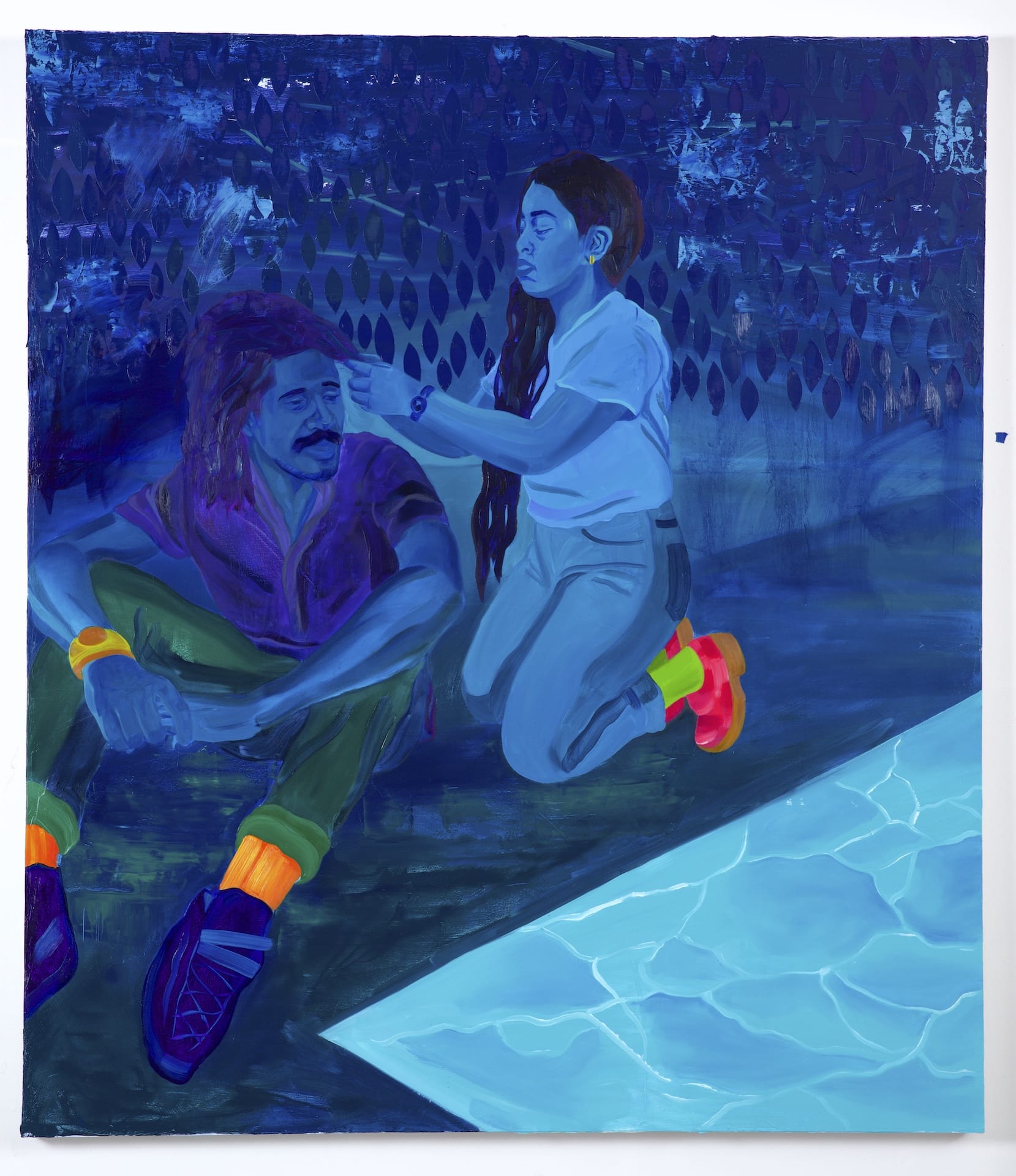
Courtesy of the artist.
So, where are you from and when did art first enter your life?
I was born and raised in St.Louis, MO. I would have to say that art has always had a role in my life- from writing stories, acting, and drawing ever since I was a child. There was a time I almost considered a career as an actor. However, Community College ( I attended the Florissant Valley Community College in Ferguson) is where I fell in love with drawing and the arts in a broader sense.
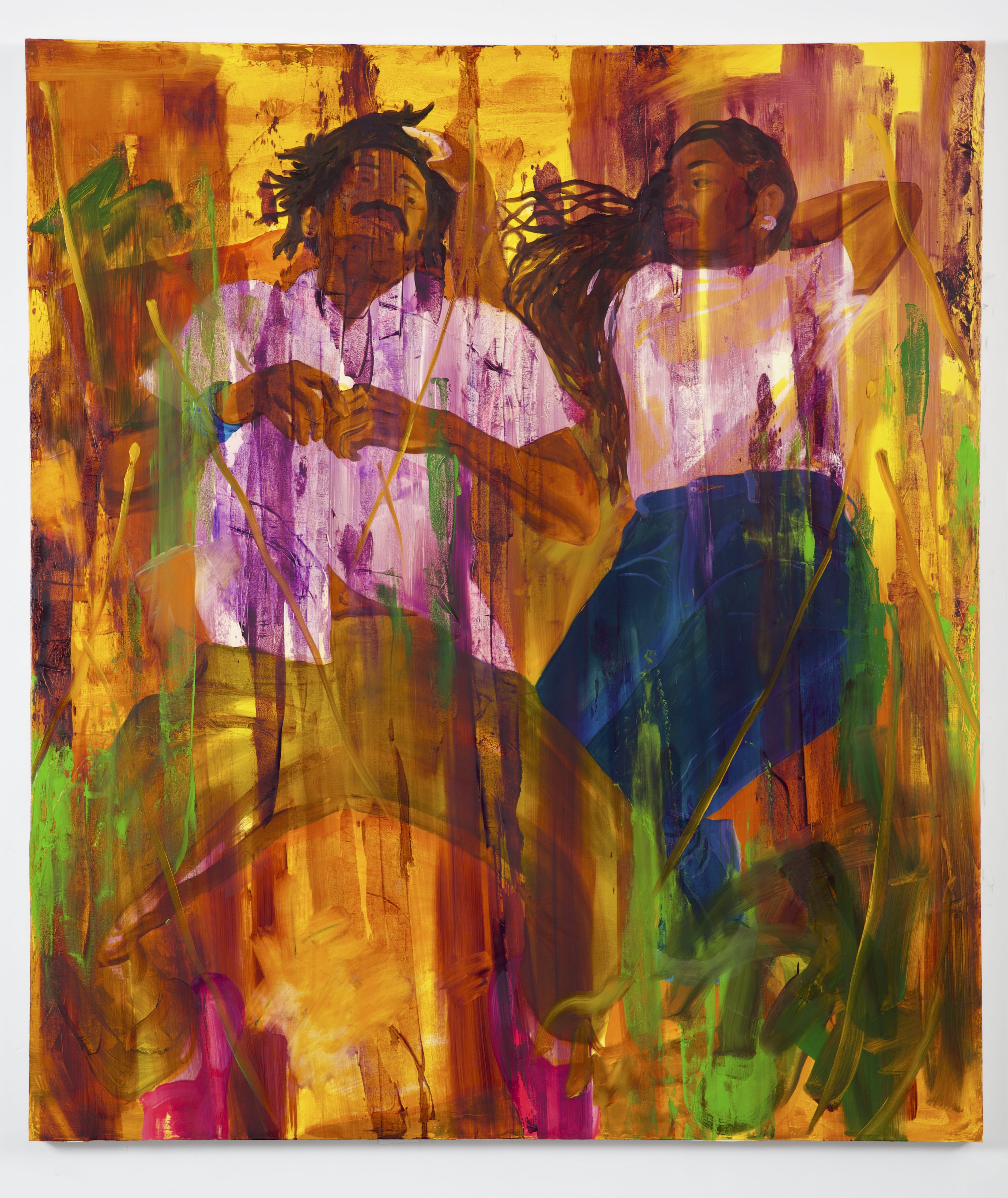
Courtesy of the artist.
What is one of the greatest challenges you have faced in getting to where you are today?
Being born on the lower end of the social and economic latter really presented long-term challenges on my journey. Firstly, when born into lower economic positions, pursuing a career in the arts is hardly something one seriously considers as a viable option out of poverty. Secondly, I grew up without a strong arts community and conversations surrounding artists and artworks weren’t common until my college studies. Lastly, I didn’t attend undergrad on either of the coasts. Typically if one would like to break into the art market and pursue a career in the arts seriously, being in either LA or NY really helps expedite things. So, I had to do a lot of foot work on my own to compensate for the number of disadvantages present in my life.
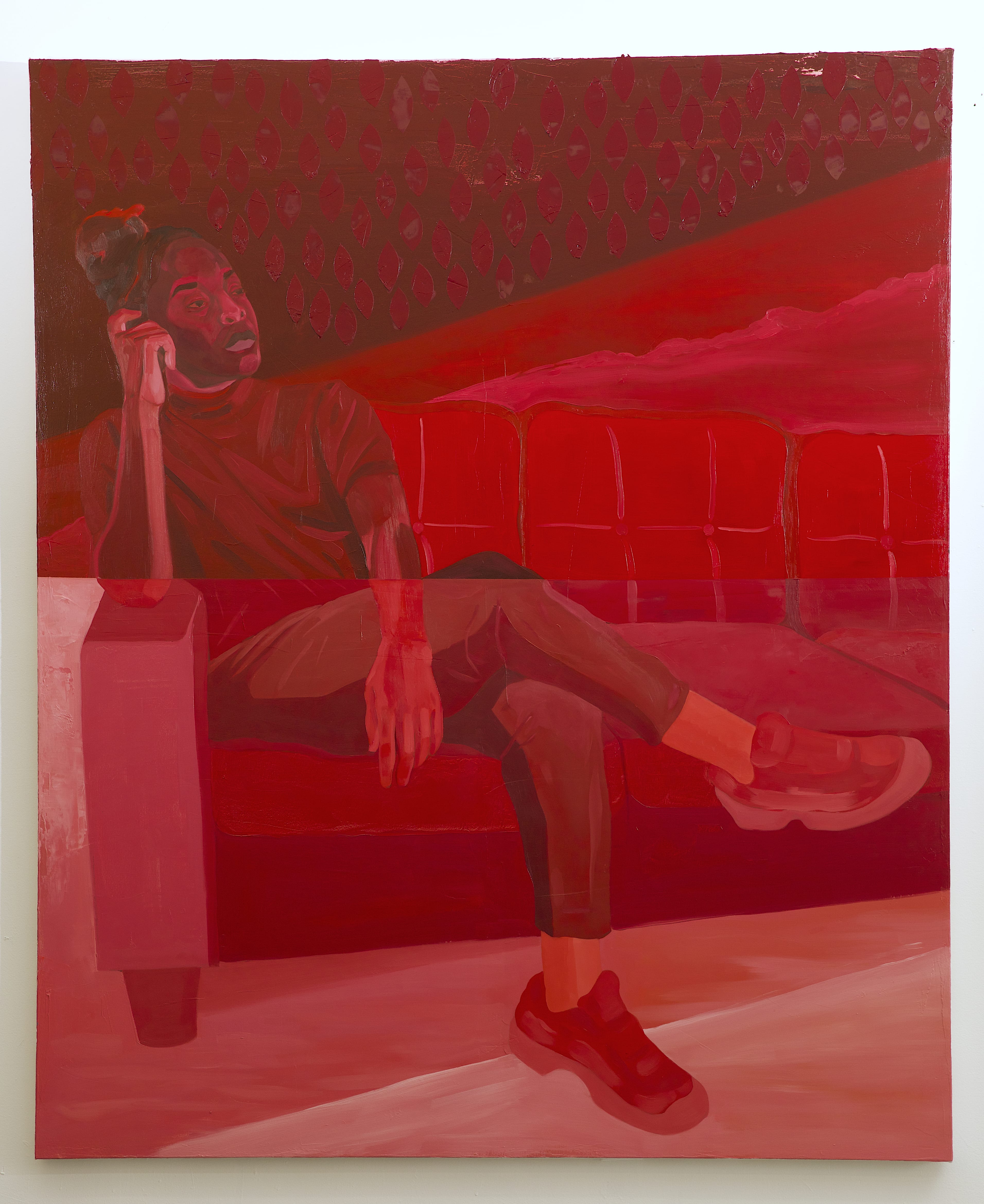
Courtesy of the artist.
Has your work always taken on its current style? And, in your own words, how would you describe that style?
Not exactly. For the longest time, I preferred making large drawings on paper as opposed to large paintings. I never considered myself a good painter. So, I spent a lot of time trying to find my voice as a painter. I don’t know if I ever thought about a name for a “style” that I’m using. There are names I give certain bodies of works or projects- such as “Primary Magic”, “After Albers” or “The Wash” for instance.
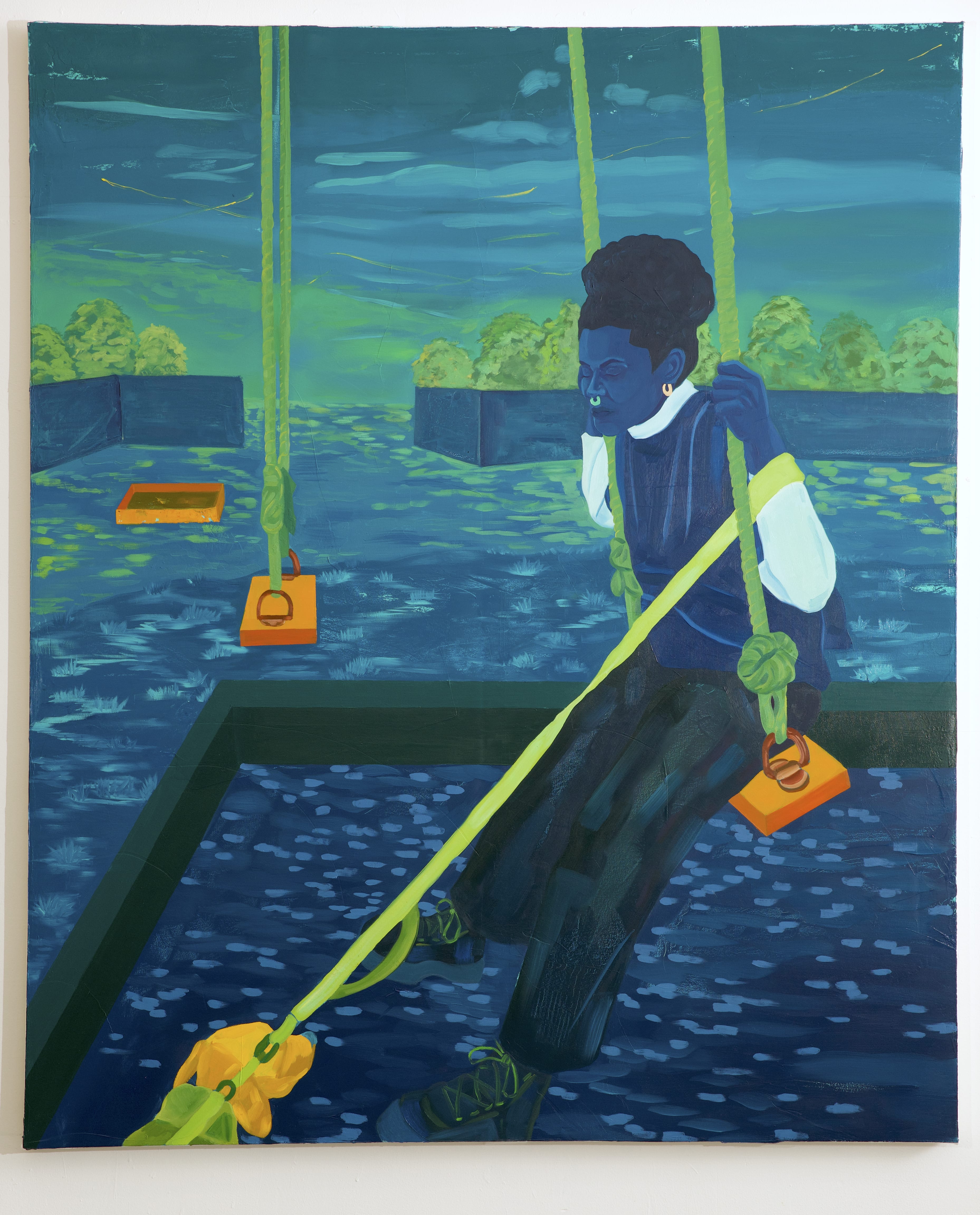
Courtesy of the artist.
Your works are subtly monochromatic and that translates to wonderfully contemplative scenes. What does color mean to you and for your work?
I hope that my usage of color in the work is reminiscent of the monochromatic paintings produced by influential color field artists like Mark Rothko, Josef Albers or Morris Louis. The parallels between their works and the history of minimalist or expressionist color field works and the works I produce is something I am interested in.
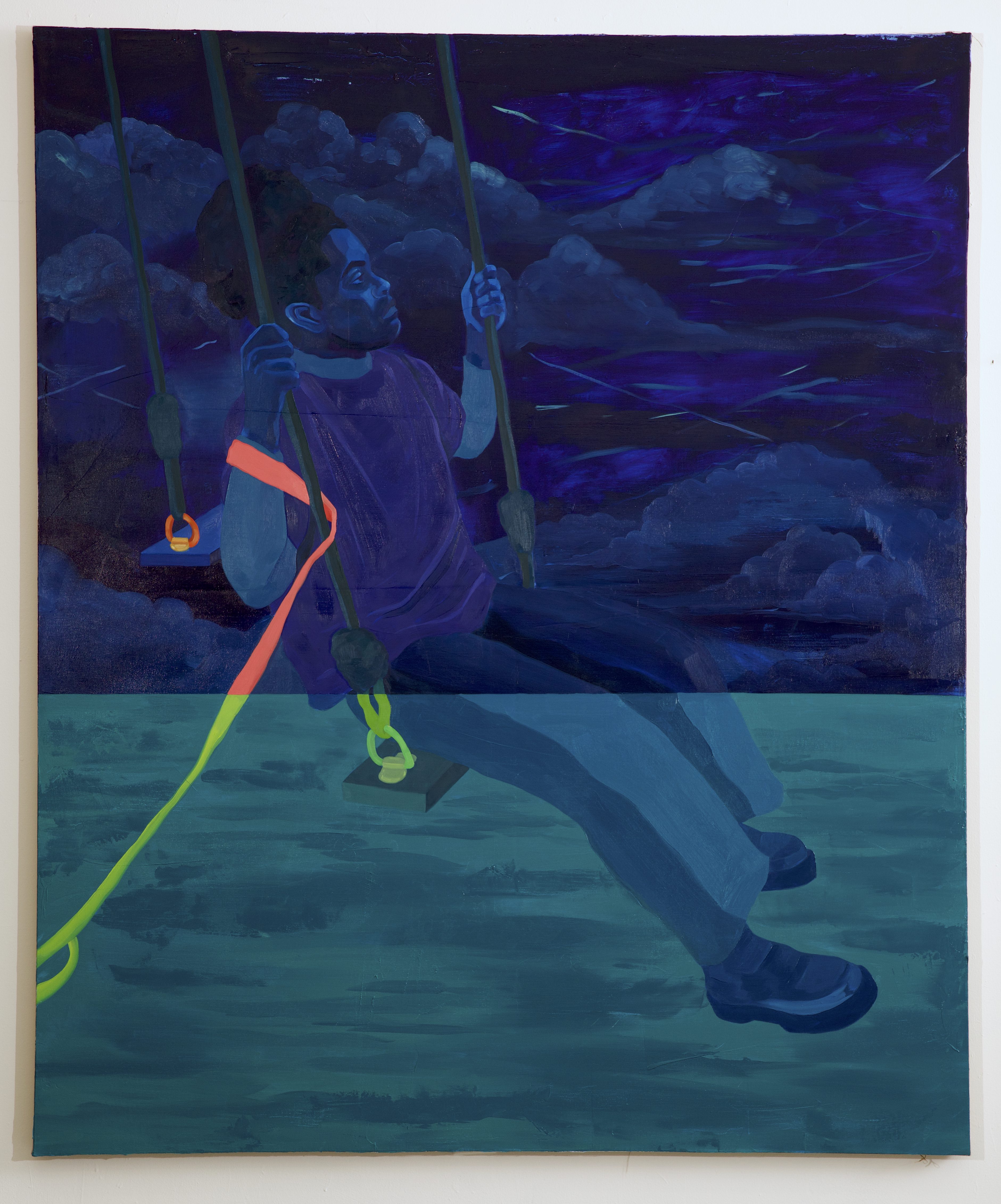
Courtesy of the artist.
What do you hope people feel or experience when they look at one of your works?
I would like for people in my community and outside of my community to familiarize themselves with images of black people in moments of rest. But not only that, I also hope the black youth who engages with my work also sees images of themselves as intellectuals engaging in intellectual activities- like reading and writing. I hope that the images I produce make a difference in how the black community sees themselves. Too long has history seen and located black folks as hyperactive. Constantly fighting and working to circumvent the vulnerability that has been forced upon them. I want to remind them that it’s okay to rest and to experience stillness. I also want to address the issues around black people and intellectualism. Speaking well and being literate could be a death sentence for black folks years back, and there seems to be a fear around openly showing our intellect without it being viewed as a white quality. Indeed we are intellectuals too. We also love to read.
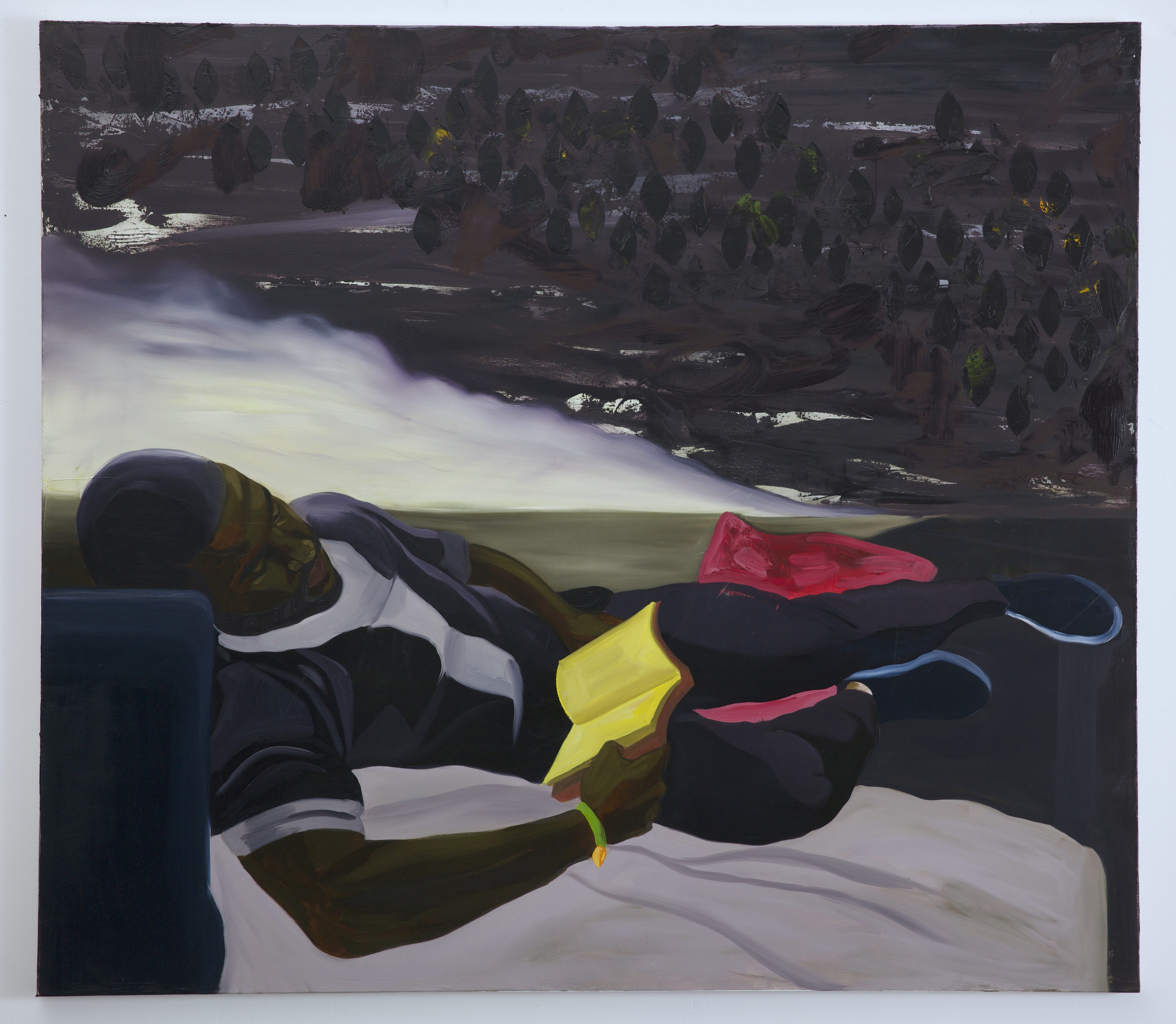
Courtesy of the artist.
From where do you draw inspiration?
A lot of my inspiration stems from the books that I have read. Currently my work is influenced by “The Souls of Black Folk” by W.E.B DuBois and the “Brief Wondrous Life of Oscar Wao” by Junot Diaz is another.
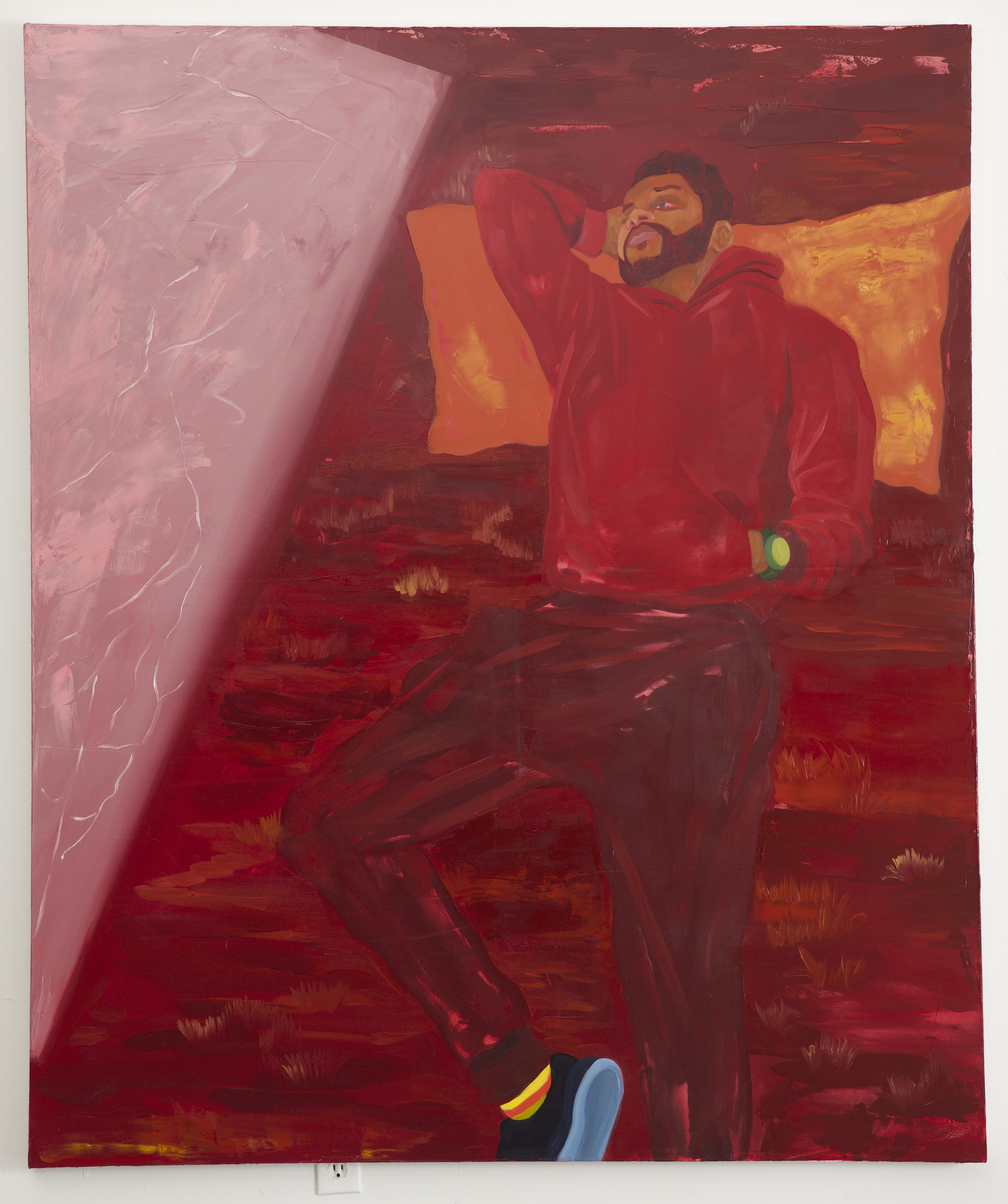
Courtesy of the artist.
Take us through a perfect day in the studio. How do you begin a work and what is that process like?
My days are always a little different. Some of the most consistent habits would be to arrive at my studio, and look at what I’m working on. I like to study my works throughout their development and figure out what it is that a particular work needs. Then I’ll scroll through art online for a while. See what’s happening on Instagram. It’s not often that I’m actually painting until the early afternoon. I’ll look through my emails and then get to work. I’ll paint until about 9 or 10pm if I am behaving and then clean up and leave.
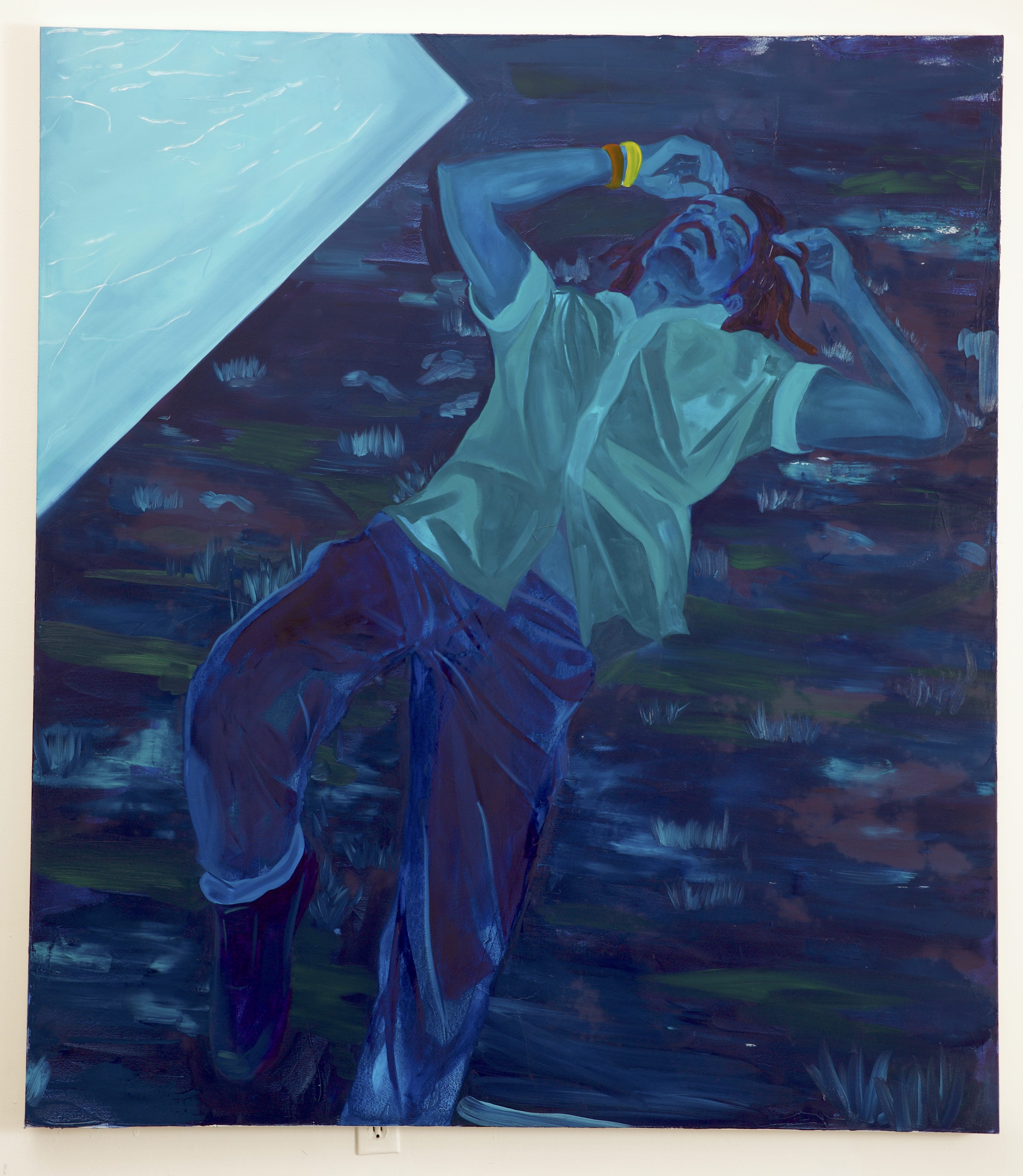
Courtesy of the artist.
Are there any art historical figures or movements that have influenced you?
I would say Lynette Yiadom Boakye is a major influence for me, along with Kerry James Marshall and Lisa Yuskavage. Even some abstract painters like Morris Louis and Barnett Newman are influences for me.
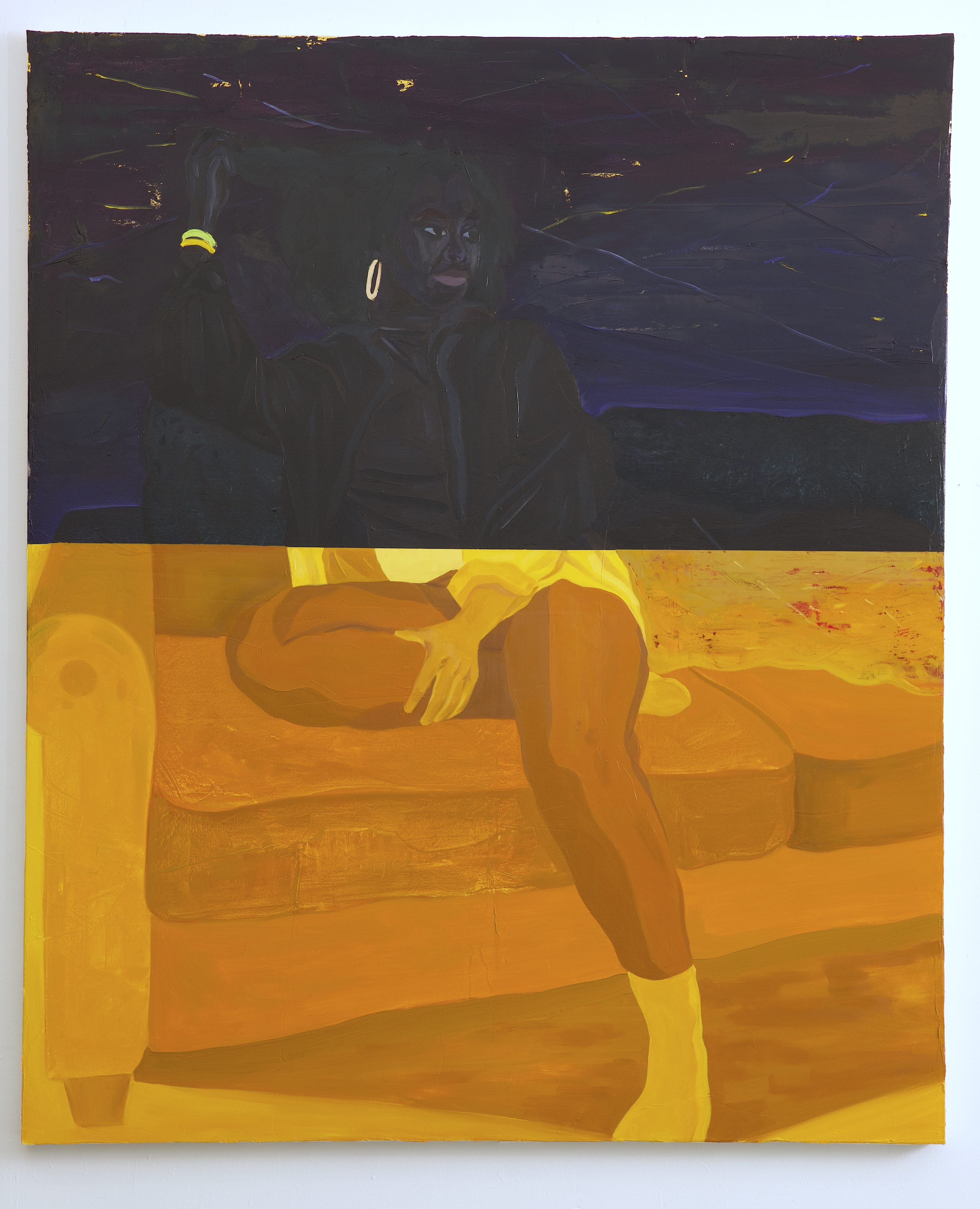
Courtesy of the artist.
What do you have coming up?
I am preparing for my solo show at the August Wilson Center of African American Art and a solo show at the Anna Zorina Gallery in New York.
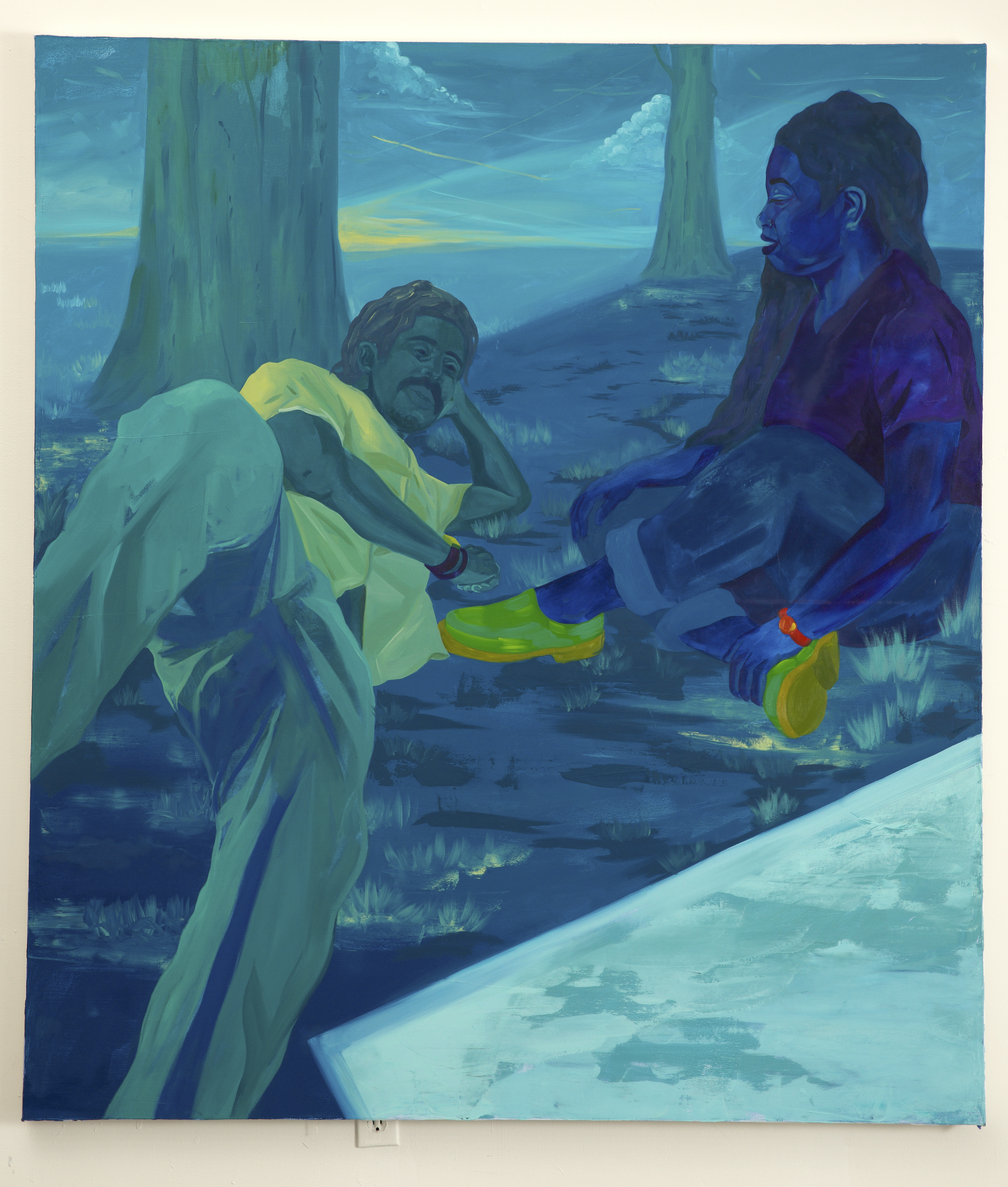
Courtesy of the artist.
At the end of every interview, we like to ask the artist to recommend a friend whose work you love for us to interview next. Who would you suggest?
I would recommend the artist Gabriel Mills, Kathia St. Hilaire, Amaryllis Dejesus Moleski or Ana Benaroya are all incredible artists.
